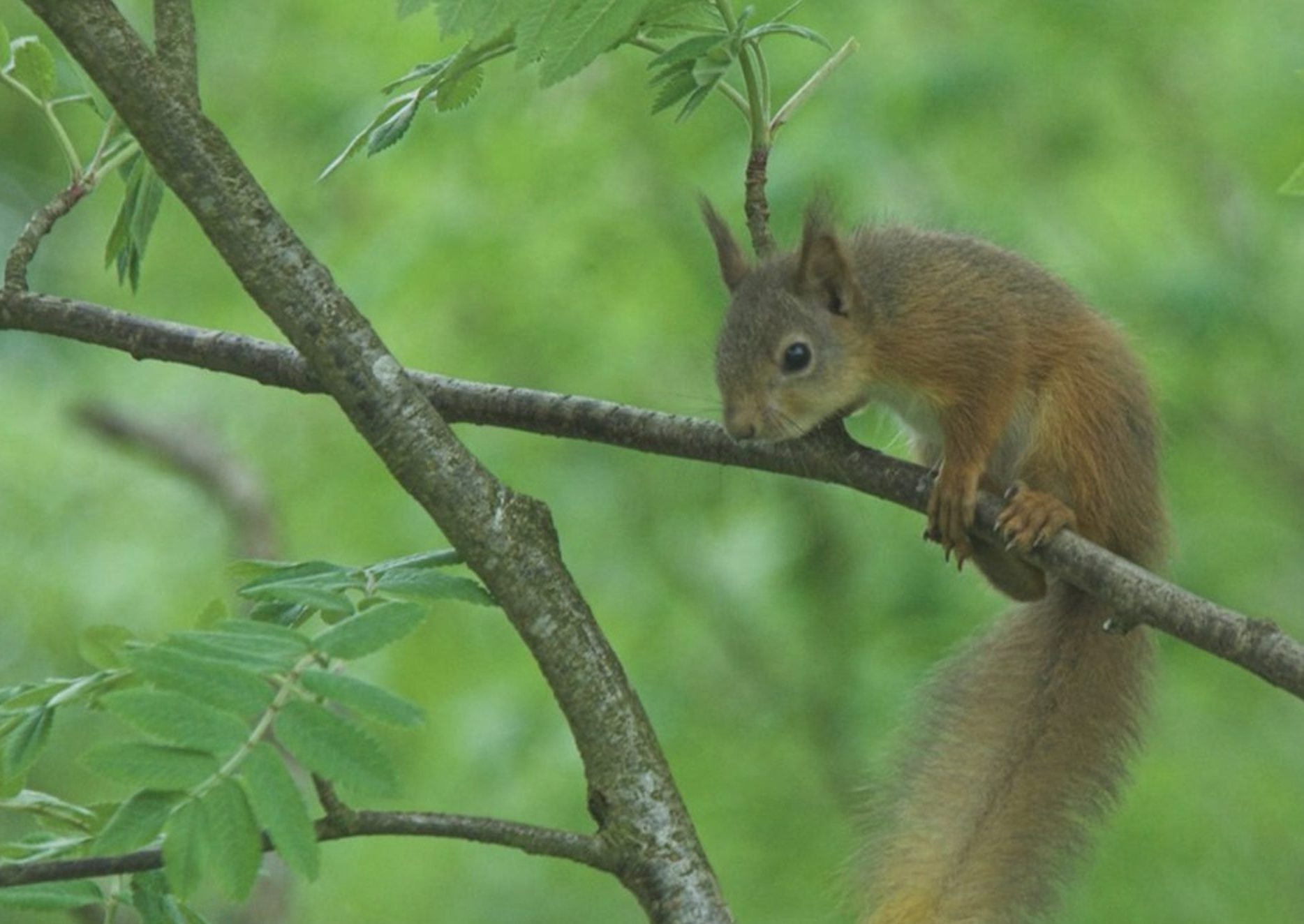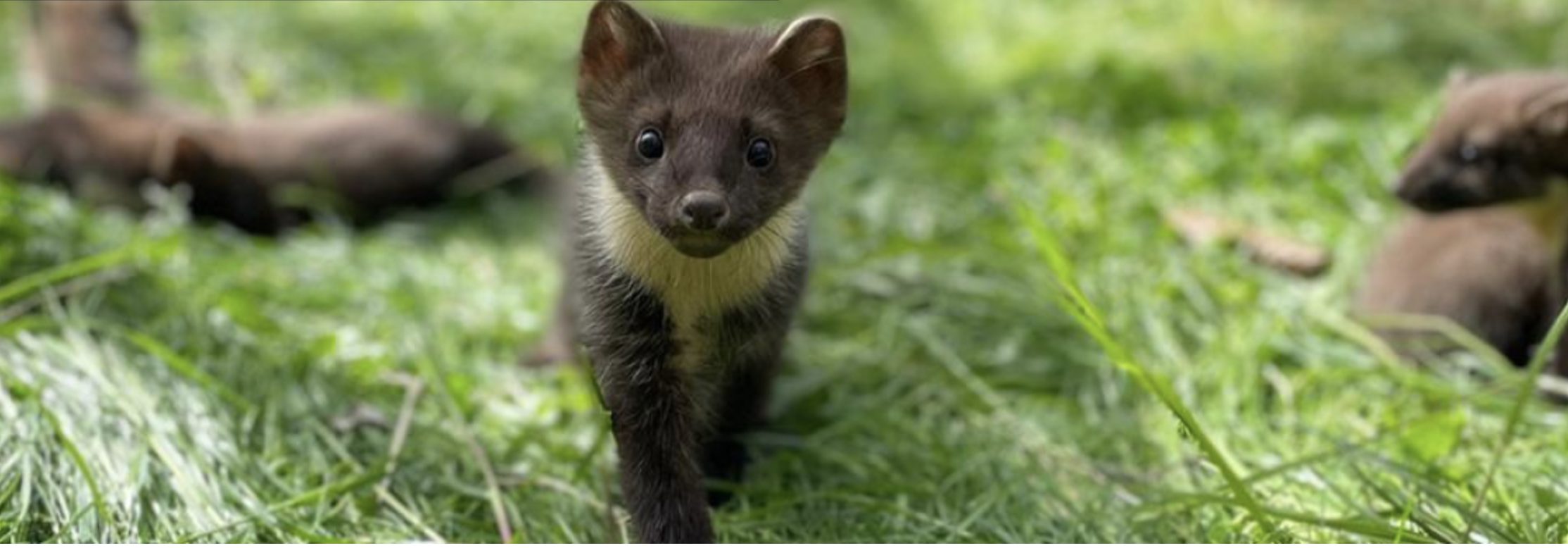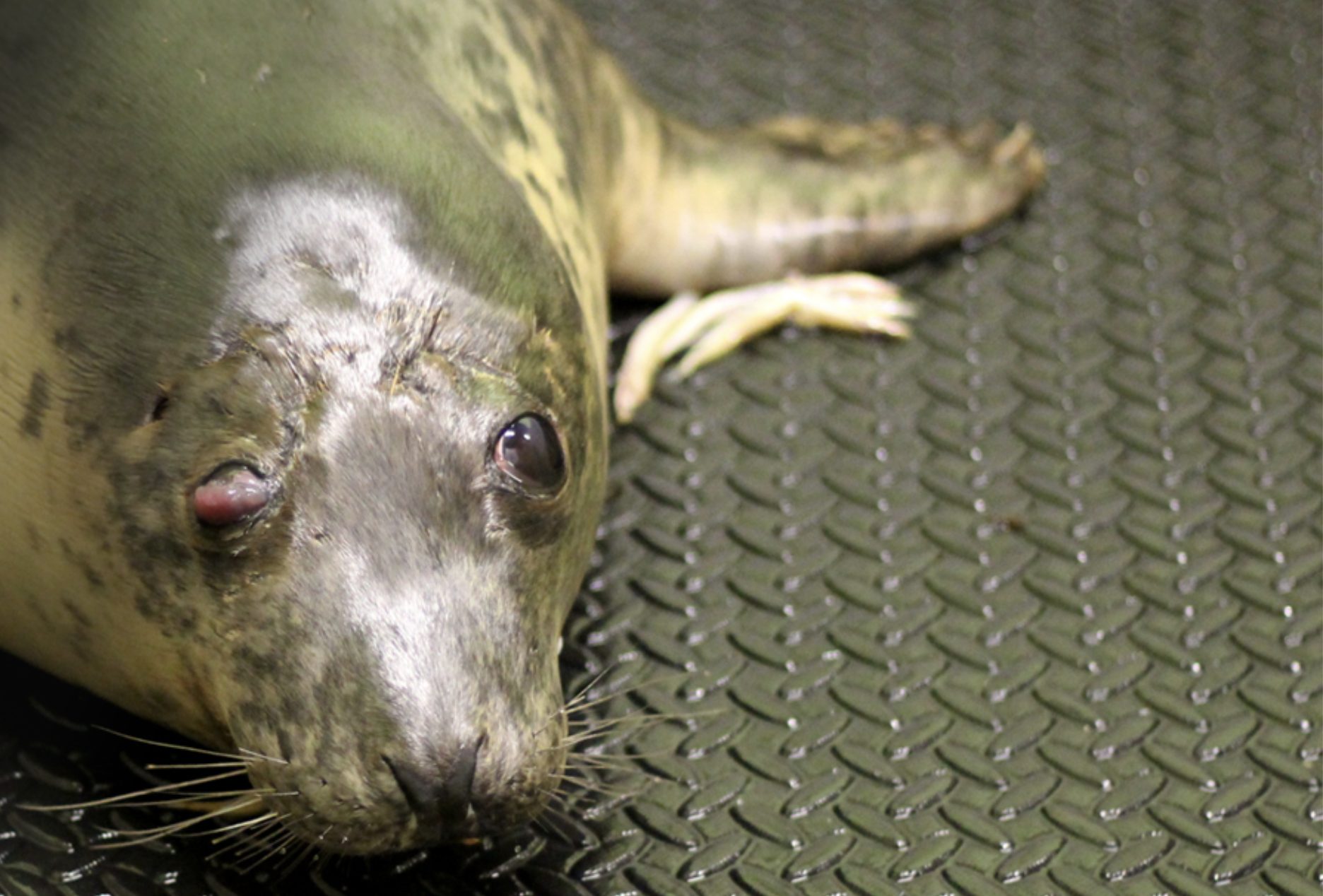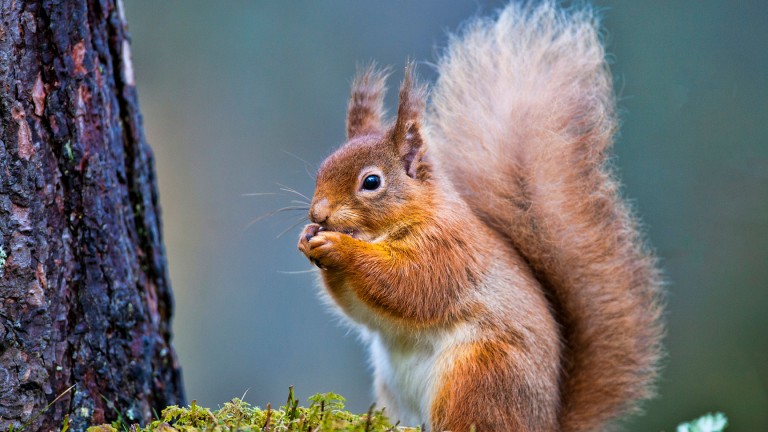
What Do Squirrels Eat?
Find out about everything these creative woodland creatures like to feast on.
Bright eyed and bushy-tailed – squirrels are the unmistakeable icons of the UK woodland. They’re curious creatures, often venturing into urban areas, or your garden, in search of food. Here’s everything you can feed these friendly foragers to keep them healthy and thriving.
What do squirrels like to eat?
There are two types of squirrels in the UK – grey squirrels, originating from North America, and their red, British counterparts. After the introduction of grey squirrels in the 1800s, the population of red squirrels has drastically decreased due to disease and the competition for food sources.
Both species of squirrel eat the same foods and adapt their diet depending on what’s available to them. They eat a variety of things and are expert foragers. Although they’re omnivores, they mainly eat plantstuff. They only usually eat meat when seasonal conditions are difficult, or their preferred food is in short supply. During these periods they will eat insects, bird eggs, small rodents, and even baby birds.
Their primary food source is made up of nuts and seeds from trees, and supplemented by fungi, fruits, grains, vegetables, bark, roots, and plant bulbs. They root around in the undergrowth for their food and strip off bark to nibble on. They also dig holes and bury their nuts and seeds inside, which comes in handy for the winter months when food isn’t abundant.
How red and grey squirrels differ in their eating habits
Grey squirrels will often retrieve nuts they’ve buried using their strong sense of smell and impressive memory of locations. Red squirrels, however, are not as skilled at remembering where they stashed their food, allowing sneaky grey squirrels to find and steal it.
The grey species will also take a larger share of food than they need, hiding it away for later and using deceptive tactics to protect their supplies. They dig multiple, decoy cache sites, that don’t contain food, in order to distract other hungry squirrels.
Grey squirrels search for food on the ground, as opposed to red squirrels who search mostly in the trees. This gives them an advantage over supplies and means they have a broader diet. They also have a more mature digestive system that allows them to eat unripe seeds and nuts, unlike red squirrels.
What nuts do squirrels eat?
Both species of squirrels will eat any type of nut, but their favourites include:
- Acorns
- Walnuts
- Pecans
- Hazelnuts
- Almonds
- Beech nuts
- Pine nuts
- Macadamia nuts
They can eat nuts with or without the shells. In fact, extracting nuts from their shell is a good exercise to help squirrels sharpen their teeth.
What to feed squirrels
Feeding your visiting squirrel can be a great way to connect with nature and support these animals during times when their food supply is low. As with feeding any wildlife, supply this food in moderation as it’s important that squirrels still engage with foraging behaviours. Giving them suitable, nutritious foods will ensure that they continue living a happy and healthy life.
The best foods to feed squirrels are:
- Dried corn on the cob
- Bark, twigs, and soil
- Hazelnuts in shells
- Walnuts, pine nuts, and almonds
- Spinach
- Celery
- Bean sprouts
- Pumpkin seeds
- Sunflower seeds
You can also buy special squirrel feed which will have all the nutrients and minerals that they need to thrive.
If feeding them nuts, ensure these are unsweetened and unsalted.
Hungry squirrels can be cheeky – digging in your garden or feasting on the food left out for other wildlife. Investing in a specialised squirrel feeder will help create an area in your garden specifically for them, discouraging them from damaging or tampering with anything.
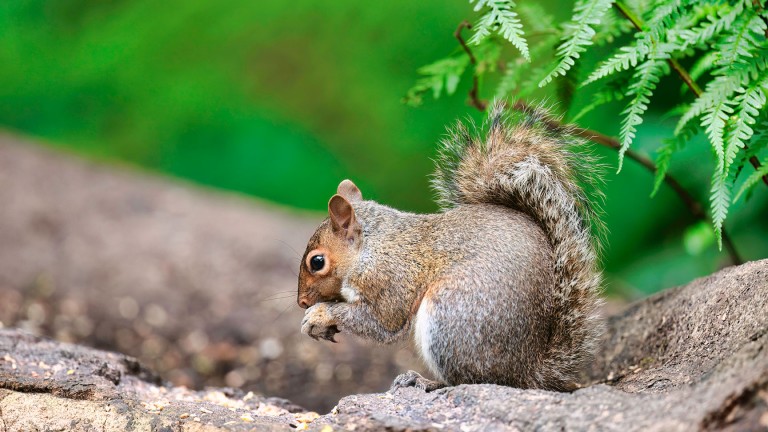
What we feed the squirrels in our care
At our centres, we often receive sick or injured squirrels to rehabilitate and release back into the wild. Whilst they’re in our care, we like to feed them a nutritious, balanced diet to mimic what they would usually eat. This consists of mainly nuts and seeds, supplemented with fruits and other plantstuff.
We feed them:
- Hazelnuts
- Cashews
- Almonds
- Pecans
- Walnuts
- Peanuts
- Acorns
- Pine nuts
- Sunflower seeds
- Brambles
- Rosehip
- Pinecones
- Chestnuts
- Apples
- Carrots
- Raspberries
- Blueberries
Do squirrels eat fruit and vegetables?
Fruit is a natural part of a squirrel’s diet and is a great source of vitamins and minerals. However, it can also be high in sugar so should be given in moderation.
Fruits that squirrels love include:
- Blackberries
- Raspberries
- Blueberries
- Strawberries
- Apples
- Pears
- Grapes
Vegetables, although healthy and nutritious, should also be given in moderation. Offer them alongside a balanced diet of nuts, seeds and plantstuff.
Squirrel-safe vegetables include:
- Leafy greens such as spinach and kale
- Carrots
- Broccoli
When giving fruit and veg to your resident squirrel, ensure all of it is rinsed and clear of pesticides.
What not to feed squirrels
Squirrels are naturally inquisitive creatures and will try mostly anything. There are a few things they don’t like to eat though, including:
- Certain flower bulbs – such as alliums, daffodils, snowdrops and hyacinths
- Chilli
- Raw onion and garlic
Just as with any animal, you shouldn’t feed squirrels food that’s considered bad for humans such as pizza, fast food or sugary snacks. Chocolate can be incredibly toxic for them so be sure to steer clear of this.
Also, avoid any corn you put out going sour or mouldy as this can be fatal to squirrels. Clear any uneaten corn away and replace it with fresh stuff.
What do baby squirrels eat?
Baby squirrels, also known as kits or kittens, have specific dietary requirements in their early stages of life. Newborn kits rely solely on their mother’s milk for around 6 – 8 weeks. As they develop their fur and open their eyes, their mother will supplement her milk with foraged soft fruits, nuts and seeds. At around 8 – 10 weeks old, weaning begins and their diet starts to vary more, and by 10 -12 weeks old, these cute creatures will begin foraging for themselves.
A squirrel’s diet in a nutshell
We hope this advice helps you prepare a healthy and nutritious feast for your friendly, resident squirrel.
Please consider giving a one-off donation today to help us continue our mission to support and protect Scotland’s wildlife.
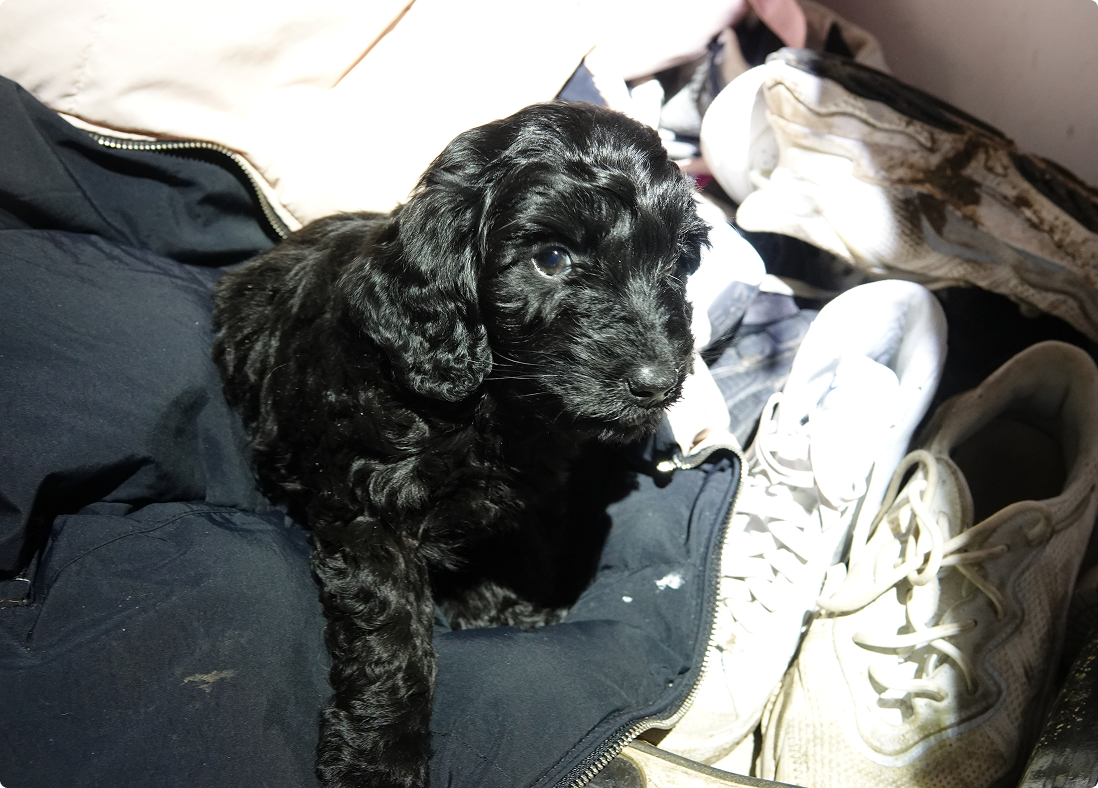
Puppies across Scotland need your help
Please consider giving a monthly donation today. Give Scotland’s animals the gift of safety this winter and beyond. The criminals involved in the low-welfare puppy trade never stop. And with your help, neither will we. Every £1 matters to puppies like Winnie.
